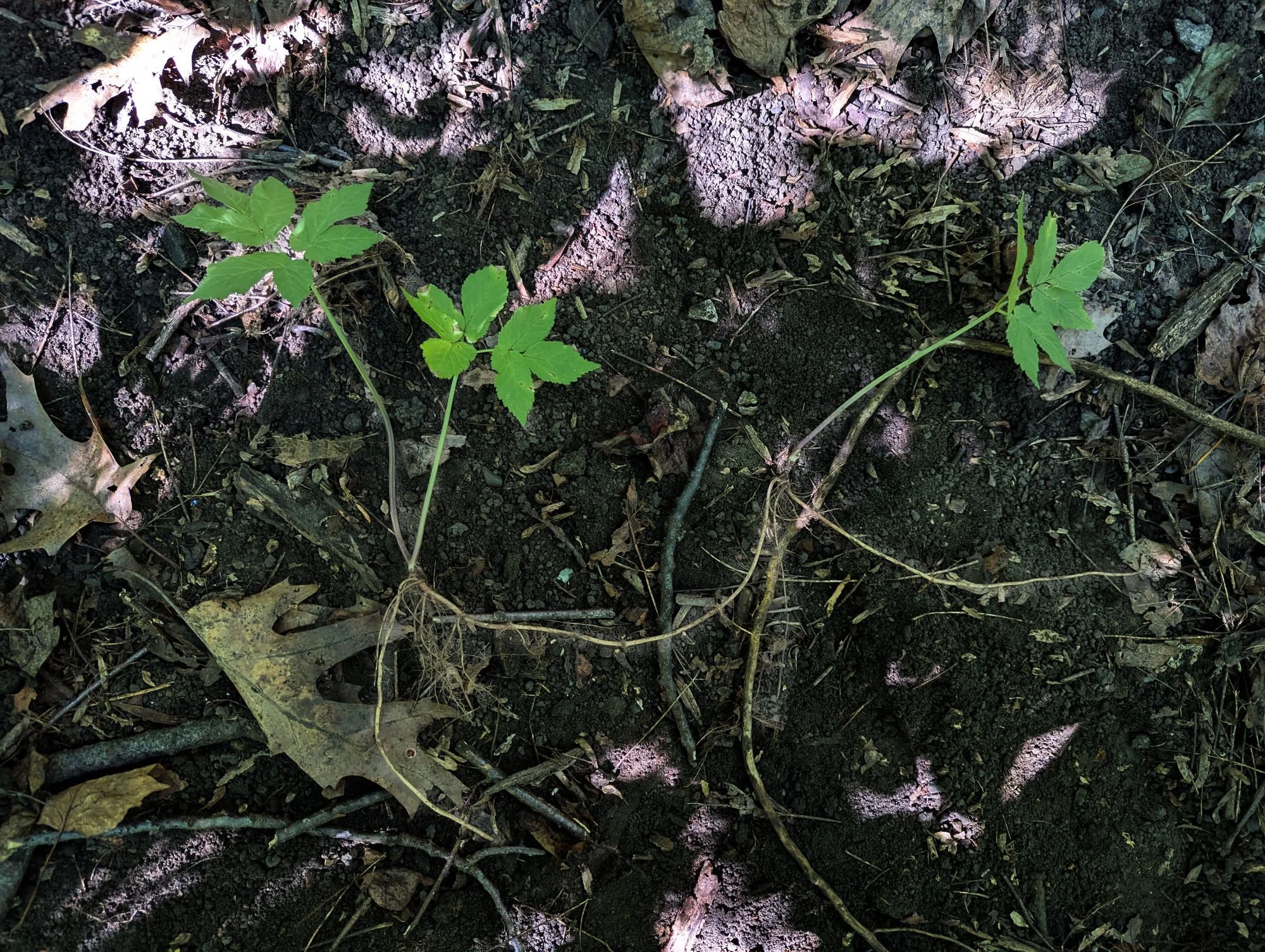Digging Up Goutweed, Finding Roots
The goutweed leaf
Saturday morning, the farmers market at Inwood Hill was bustling with neighborhood shoppers. August is the season of colorful berries, juicy peaches, and prairie flowers, and the stalls reflected it in full. I passed a bakery stand, a cheese-and-jam stall, and a Tarot reader’s table before reaching the end of the market. At the crossroads of Seaman Avenue and Isham Street, small garden patches bloomed with roses, hibiscus, sunflowers, coneflowers, black-eyed Susans, and more. Signs in of these gardens announced: Inwood Butterfly Sanctuary, Pollinator Friendly Garden, Butterfly Garden, Monarch Waystation.
Just beyond those gardens stood the entrance to Inwood Hill Park, where NYC Parks staff member Rebecca checked in volunteers for the day’s forest restoration.
After a ten-minute hike uphill, we arrived at a sloped clearing dotted with young tree saplings. The ground, however, was blanketed in goutweed. Our job was to clear as much of it as possible—goutweed is an invasive species from Europe that spreads aggressively and prevents native plants from thriving.
Two goutweed plants connected by the rhizome
Goutweed grows through a dense underground network of rhizomes—horizontal stems that allow it to spread quickly and take over entire areas. Removing it requires digging deep and unearthing the root system.
Volunteers at work
I teamed up with Carolmarie, a Jamaican woman who teaches gender studies, philosophy, and the arts. We bonded swapping stories of living in Boston and dancing at the Dance Complex in Cambridge. Soon after we began digging, she uncovered a finger-thick rhizome that stretched endlessly across the slope. Fascinated, we started excavating from both ends.
Carolmarie digging through the rhizome
I snapped one section off by accident, but Carolmarie kept going. After twenty minutes of steady work, she rose with a triumphant smile.
“This is the mama plant of them all!”
Carolmarie and I holding the rhizome
The stem stretched more than five meters long.
“This could be in a fairytale,” she said. “Any creative writers here?”
Then she paused, catching her breath.
“After seeing how deep and strong these stems run, I feel morally conflicted pulling them out.”
“They are impressive,” I admired. “I looked them up—when cultivated in gardens, they produce delicate white flowers.”
Carolmarie glanced at the photo on my phone.
“Oh! That makes me feel even worse to kill them.”
“Unfortunately, left untended here, they choke out the native plants.”
She shook her head. “That’s just what they say. Who gets to decide who’s native and who’s not? We all came from somewhere else.” She gestured toward the rhizome, then to both of us—as immigrants who had each traveled far, searching for belonging, often feeling unwelcome.
“This lady,” she said, pointing to the plant we had unearthed, “worked hard to establish herself and build a community here.”
“True,” I acknowledged. “And yet, European settlers once came to this land too—worked hard, built communities—and, in a way, they would eventually destroy the ones who were already here.”
“Oh, not ‘in a way,’” she corrected me. “Not ‘would’ either.”
“Right. They literally wiped out the natives. And the rest is history.”
We fell silent, letting the paradox of migration and belonging sink in.
At the northern tip of Manhattan, Inwood Hill Park holds the last old-growth forest in the city. Long before colonization, it was home to the Wecquaesgeek people. Aside from rock shelters sparsely found in this park, no trace of their community remains.
Who is native? Who is invasive? Who deserves to stay?
Those questions were far larger than our Saturday morning task. Rebecca, though, offered a practical answer at the end of the event. She instructed us to pile the goutweed plants on a boulder where their roots couldn’t reach the soil, hoping they would dry out. Yet even as we stacked them, I noticed new leaves already sprouting from a dried heap.
Twenty volunteers, two hours of digging—and we had cleared less than half the slope. We didn’t eradicate the plant. We only slowed down its expansion.
“That should do,” Rebecca said, gathering the emptied bags and tools before leading us back toward the park entrance.





